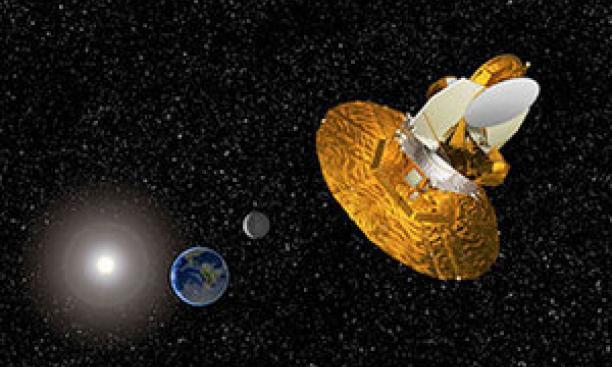

The WMAP spacecraft, shown in this NASA rendering, has measured the oldest light in the universe for the last nine years. (NASA/WMAP Science Team)
The Wilkinson Microwave Anisotropy Probe (WMAP) was launched in June 2001 to make fundamental measurements of the universe, and by all accounts, its nine years of exploration have been a resounding success.
Science named WMAP its "breakthrough of the year" in 2003, and more recently, in an Oct. 10 editorial, The New York Times said "it is hard to overstate just how far this one small satellite has carried us in our understanding of the history of the universe." NASA's WMAP home page lists the program's "top 10" contributions, including the first "fine-resolution, full-sky map" of cosmic microwave background radiation, and a definitive age of the universe: 13.73 billion years old, accurate to within 1 percent or 0.12 billion years.
Its mission complete, the probe was sent into retirement orbit around the sun last month.
From WMAP's beginning -- and in a preceding project, the Cosmic Background Explorer -- Princeton scientists played an important role in the measurement of background radiation, the oldest light in the universe. Key contributors include the late astrophysics professor David Wilkinson (WMAP's namesake), the late physicist Robert Dicke, current professors David Spergel ’82 and Lyman Page, and senior research physicist Norm Jarosik.
"The end of WMAP is a moment of sadness, joy and satisfaction," Spergel said in an Oct. 13 University release. "Sadness -- thinking about its journey come to an end. Joy -- from thinking about the pleasure of working with my colleagues on the WMAP team. And satisfaction -- thinking about its successful nine-year run."
Read more about WMAP's contributions to the field of cosmology in W. Barksdale Maynard ’88’s Sept. 22 Princeton Alumni Weekly feature about Princeton astronomers.
